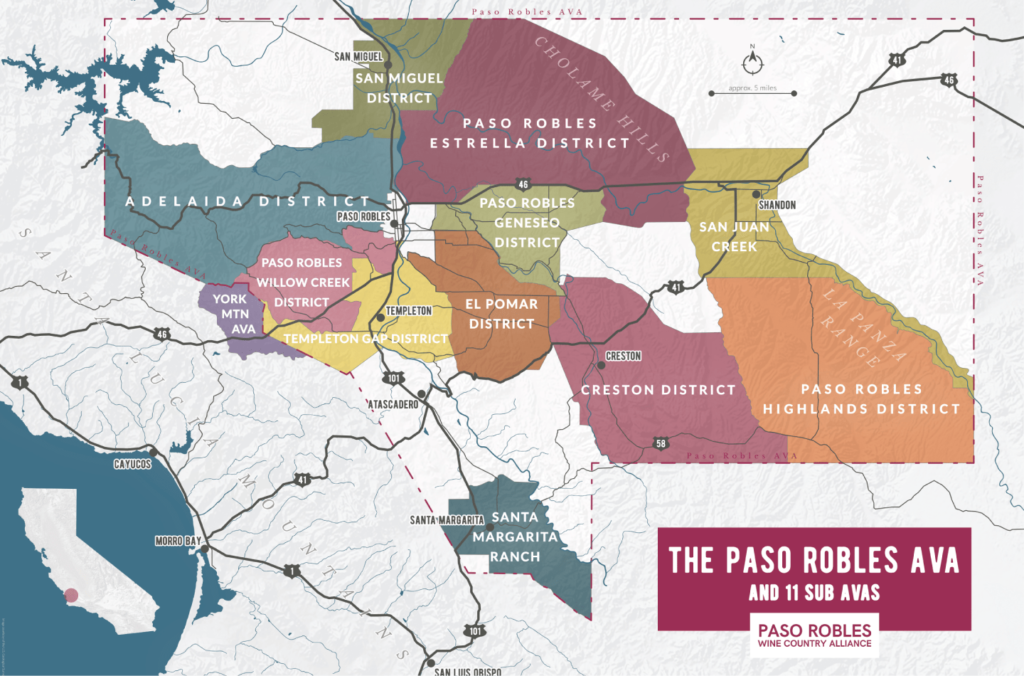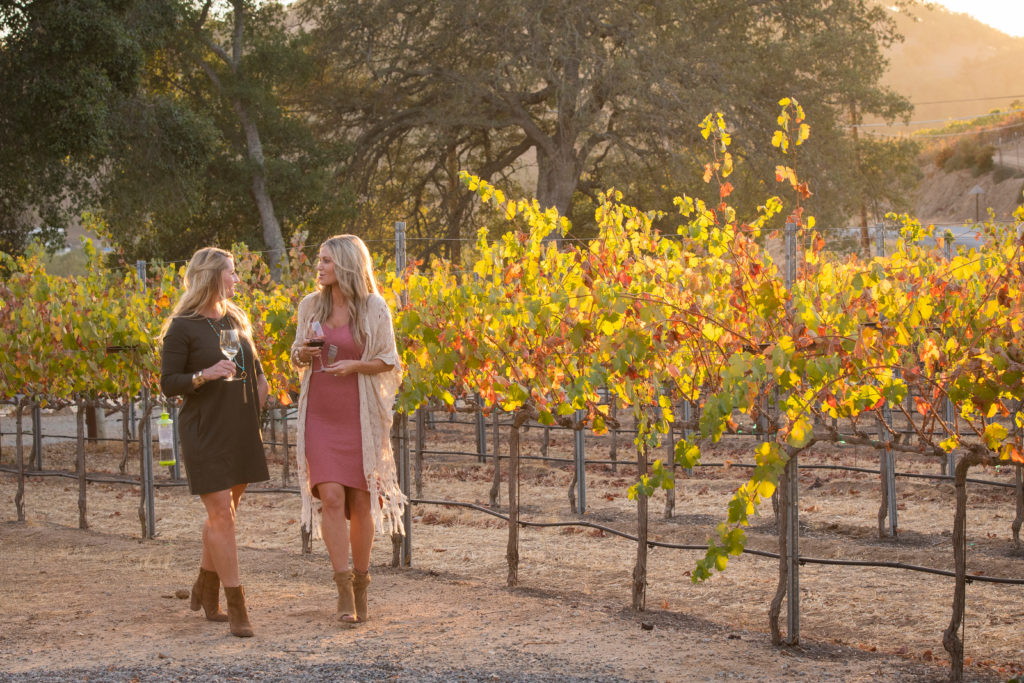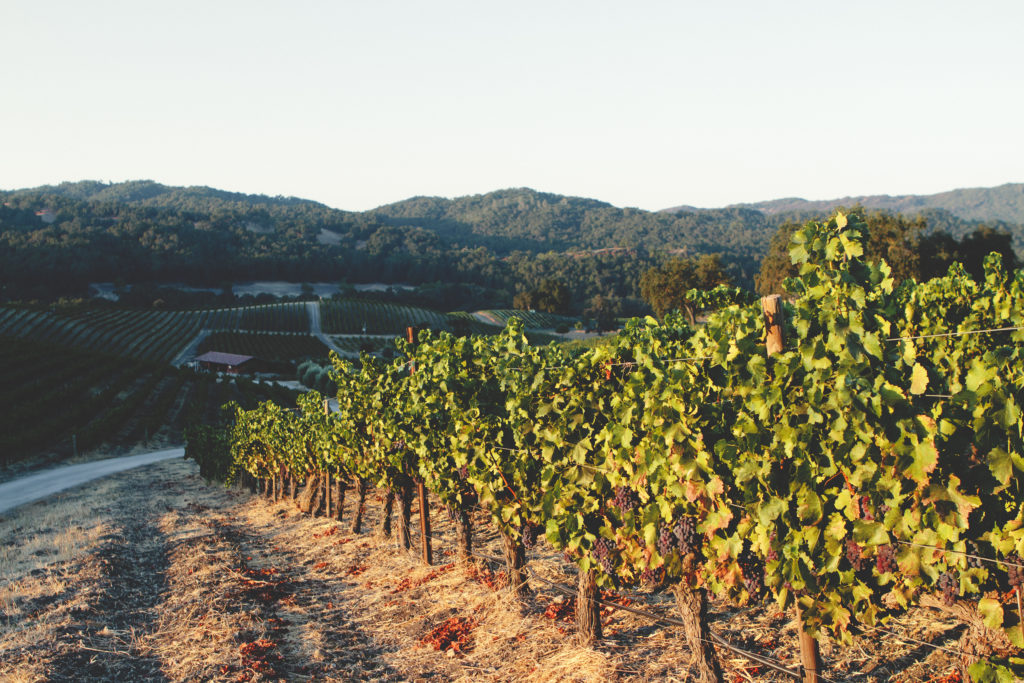Paso Robles (California)
History
Wine grape growing in California began with the Spanish Missions. In 1787, Mission San Miguel Archangel was established, bringing wine grapes to what would eventually become the Paso Robles wine region. Years later, having failed to earn riches in the Gold Rush, many immigrants moved South to pursue agriculture, which included growing grapes for wine.
Over generations these families would become the first commercial wine grape growers in the region. Later, the Paso Robles American Viticultural Appellation (AVA) was created and is now home to more than 200 wineries and 40,000 vineyard acres focusing on premium wine production.
Paso Robles is California’s fastest growing AVA, with most of the growth being driven by small family-owned producers. Established in 1983, the producers there have been creating wines that express Paso’s roots as a wine region and its unique terroir. These expressions of Terroir come from historic vineyards and special sites from all around the region.
Some of the essence of Paso, be it minerality, freshness, or fruit, can be found by exploring the far reaches of this AVA. In 2014, 11 new AVA’s were established in Paso Robles to help better define this broad sense of place. Using science as a standard, these AVAs are characterized by their soil, climate, topography, rainfall, and aspect. Only seven years old, but with many more years of growing history, these AVAs are setting a new standard for understanding how to best embody that sense of place.

Diversity
The Paso Robles AVA is remarkable for its wide range of diversity spanning topography, climate, soil, winemaking, and grape varieties. The variety of geographies and growing conditions within the AVA are directly responsible for its having amassed a collection of more than 60 different types of vinifera grapes.
The steep western hills of the Paso Robles wine region provide a good example of Paso Robles diversity. From warm Southern-facing slopes to cool valleys and breezy mountaintops, this area’s different meso-climates offer wine grape growers the ability to grow cooler climate liking varieties as well as those that need a little extra warmth to ripen.
At Adelaida’s HMR vineyard, 50-year-old Pinot Noir vines enjoy a micro-climate at the bottom of a canyon that is 10-15 degrees cooler than other vineyards. Travel west just a few miles, and Mourvèdre, a later ripening variety, finds its way into the cellar in mid-October at Tablas Creek Vineyard.
It is common to define wine regions by a particular style or varietals. Paso, in keeping with its cowboy past, rejects this model and prefers to chart its own course as a maverick. This unbridled approach opens the door to creativity, giving winemakers a chance to experiment with different wine grapes within varying blends.
For example, L’ Aventure Vigneron Stephan Asseo blends Cabernet Sauvignon with Syrah and Petit Verdot in what he calls a “Paso Blend”, a technique that would not be possible in Bordeaux due to AOC regulations. Want of this kind of creative freedom led him to establish a winery in Paso Robles, now more and more a home for creative spirits that wish to think outside the box.
Diversity also comes in the form of the experience. Tin City and its surrounding neighbors of urban wineries and other craft producers are a microcosm of what the Paso Robles wine region is all about. Within a tiny four-block industrial park you will find bold expressions, unorthodox blends, eclectic varietals, and wines of unique character.
The urban wine experience is also a popular breeding ground for innovation and creativity. When you put 20+ craft producers together, all with different philosophies and styles, you create the opportunity to learn and glean best practices from one another. The urban wineries add a new co-working space-like layer to the Paso Robles experience, and a timeline of its progression toward becoming a world-class wine region.

Wine Tasting at Lone Madrone, Lifestyle wine tasting, Paso Robles, California
Terroir
Paso Robles Wine Country is centrally located between San Francisco and Los Angeles along California’s Central Coast. With a greater day-to-night temperature swing than any other appellation in California, distinct meso-climates, diverse soils and a long growing season, Paso Robles is a unique wine region blessed with optimal growing conditions for producing premium and ultra-premium wines.
The earth here is no less diverse than the other aspects we have already discussed. There are over 45 different soil series, including granite, sedimentary, volcanic, sandstone, and the Paso Robles AVA is home to the largest Calcareous-based soil formation in all of California. The high soil pH values found in these soils (7.4 to 8.6) are not typical of California’s other viticultural areas. Due to geologic uplift, calcareous shale is plentiful on Paso Robles’ west side hills, where dense clay-based soils combine with relatively plentiful rainfall to make it possible for some vines to be dry-farmed without supplemental irrigation.
Paso’s unique growing environment has much to do with its proximity to the Pacific Ocean. The main corridor here is the Templeton Gap, which allows the cooling influences of the ocean to filter into Paso Robles each afternoon in the summer and through fall. It’s a natural air conditioner that turns warm days into cool nights, the secret climactic ingredient to balanced wines.
Ocean airflow, as well as downslope winds, help cool the entirety of the Paso Robles AVA. Winemakers acknowledge that this diurnal temperature change helps contain sugar production and elevate tannins as well as maintain acid in wine grapes. Once again, broadening the palette of wine grapes grown in the region.

Varietals
The most widely planted varieties in the Paso Robles appellation are Cabernet Sauvignon, Merlot, Zinfandel, Syrah, and Chardonnay. The “Other Red” category is where varieties such as Petite Sirah, Cabernet Franc, Grenache, Mourvèdre, Petit Verdot, and many others are grouped. Although they have great importance to the region, they are not currently being tracked separately from the others. Rhone Valley grapes do especially well here, and Paso is often referred to as the “Rhone-Zone” because it is home to the largest acreage of Syrah, Viognier, and Roussanne in California.
Here is how the various varietals stack up:
- Cabernet Sauvignon (39%)
- Other Red (16%)
- Merlot (14%)
- Syrah (9%)
- Zinfandel (8%)
- Chardonnay (5%)
- Other White (5%)
In Summary
The Paso Robles wine region is California’s largest and fastest growing. It is a land of contrasts and wide diversity, supporting a wide range of grape varieties and vinification staples. As the Wild West of the wine world, it exists as a magnet for free-thinking and innovative winemakers looking to create fantastic wines, unencumbered by fashion or regulation.
CREDITS:
We want to thank the fine folks at the Paso Robles Wine Country Alliance for their support in creating this article!